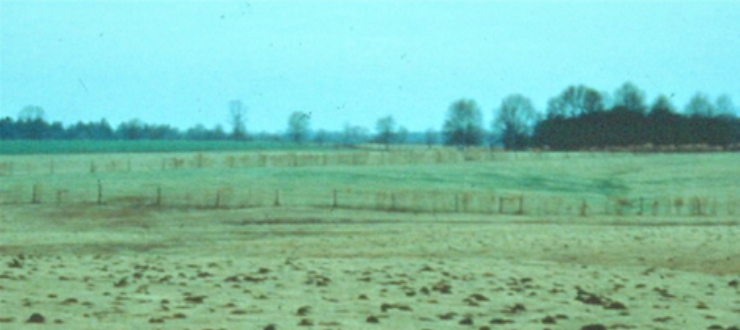
NUTRIENT FLOWS
After World War II, commercial fertilizer came into widespread use in agriculture, including on pastures and hayfields. While no one enjoyed paying fertilizer bills, for a long time it was relatively inexpensive (or at least affordable), in addition to being quite convenient to use to stimulate forage growth.
Things have changed. Commercial fertilizer is much more expensive now. Even though most cattlemen realize that forage is normally the least expensive source of nutrition for their animals, the idea of applying fertilizer constitutes a dilemma. On the one hand, fertilizer may seem unreasonably expensive. On the other hand, failure to apply fertilizer will result in poor forage growth (and in some cases, stand decline), with the result being that it may be necessary to purchase alternative sources of nutrition for livestock that will be even more expensive than applying fertilizer.
“Nutrient flow” refers to the movement of nutrients from one location to another. The extent and direction of nutrient flows depend on the type of operation and the management practices used. Nutrients can flow onto a farm, off a farm, and from place to place within a farm. Typically, there are multiple nutrients flows on a farm, with some being much more important than others. The high cost of nutrients in commercial fertilizer means that nutrients from other sources are also worth more. Therefore, nutrient flows can be important economically (as well as environmentally).
On a livestock farm, a major nutrient flow is associated with the animals. Grazing animals consume a lot of nutrients in the forage or other materials they eat, but 80 to 90 percent of those nutrients are excreted in the form of dung and urine. A single beef cow is likely to deposit well over $200 worth of nitrogen, phosphorus, and potassium in a year’s time. While over half of the nitrogen may be lost in leaching and especially volatilization, little of the phosphorus and potassium will be lost. The value of the nutrients that are likely to become available to forage plants can easily exceed $100 per acre.
All nutrient flows need to be considered, as some may be important enough to be a factor in the decision-making process. For example, if the purchase of hay or some other feed material is being considered, it makes sense to do a few calculations to determine the value of nutrients within the material. After all, most nutrients consumed are ultimately excreted.
Consideration should be given to not only the quantity of nutrients flowing but also to where they are flowing. For example, if cattle spend a lot of time in thickets or other areas where little or no forage is growing, the nutrients deposited in that location will not make many contributions to animal nutrition. If animals spend a lot of time in a creek and accompanying riparian areas, the nutrients are not only not helping produce forage; they are also damaging the environment.
Therefore, it pays to think about the impact a management decision will have on nutrient flows. This includes grazing management, placement of mineral feeders, location of spots to feed hay, and anything else that may affect nutrient flows. The goal should be to favor more even distribution of recycled nutrients and/or flow of more nutrients to places where they will be of benefit rather than be a problem. It is equally prudent to assess the amount and value of nutrients that are flowing off a farm in the form of hay, livestock, or by other means.
Foraging Ahead is a column presented by Ragan & Massey and written by Dr. Don Ball, Professor Emeritus at Auburn University. Dr. Ball is one of the authors of the popular book “Southern Forages,” which can be found via a computer search that uses the words, “Southern Forages, The Fertilizer Institute.”